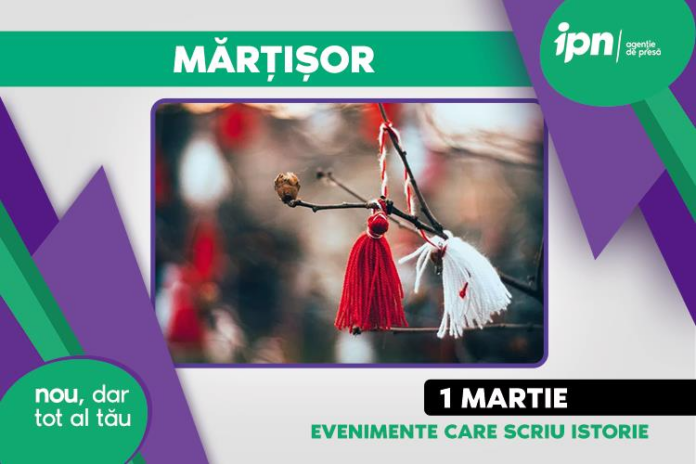Every year on March 1, people put a Martsishor amulet at chest as a symbol of spring with a strong combination of meanings, rituals and stories that passed from one generation to another.
Objects similar to the Martsishor were discovered by archaeologists on the current territory of Moldova and date back over 8,000 years. They were made of red and white stones, symbolizing the transition from winter to spring. The tradition comes from the period of the Roman Empire, when March marked the beginning of the year and was dedicated to the god Mars, protector of fertility. Thus, the Martsishor became a symbol of rebirth and vital energy.
The use of the Martsishor is not an isolated tradition. It is found throughout Eastern Europe – from Romania and Bulgaria to North Macedonia, Albania and Ukraine. In 2017, the Republic of Moldova, together with Romania, Bulgaria and North Macedonia, succeeded in adding the Martsishor to the UNESCO Representative List of the Intangible Cultural Heritage of Humanity.
Every year, the Martsishor season brings a series of events that form a true spring festival. From concerts and photography exhibitions to colorful fairs and creative workshops, these cultural events revive traditions and unite communities.
The “Martsishor” International Music Festival is one of the most anticipated holidays of the spring season. From March 1 and throughout the month, at “Nicolae Sulac” National Palace in Chisinau, the public enjoys a varied musical program that brings together local and international artists for a series of concerts and unique performances. Entitled “Spring, come home!”, the festival not only honors the symbol of spring, but also promotes the cultural identity of the nation, involving communities from all over the country and the diaspora.
Among the attraction is the photography exhibition “The Traveling Martsishor”, hosted throughout March by the National Museum of Ethnography and Natural History. The images capture the Martsishor in unique contexts, in special places on various continents, transforming it into a symbol of travel, intercultural encounters and universal tradition.
The spring fairs are another essential element of the events dedicated to the Martsishor. In the Great National Assembly Square and in all districts of the capital city, craftspeople present a wide range of Martsishor amulets, souvenirs and traditional objects.
Workshops on how to make Martsishors are held at the National Museum of Ethnography in Chisinau and in various localities of the country. The participants, from children to adults, not only explore the traditional art of braiding red and white threads, but also discover the ancient meanings of Martsishor.
FOR THE MOST IMPORTANT NEWS, FOLLOW US ON TWITTER!
The events dedicated to the Martsishor show that this amulet is much more than a simple accessory and traditional element, and represents a bridge between generations, a catalyst of the energy of spring and a symbol of continuity, reminding us of our roots and historical values, from purification rituals to the collective joy of the rebirth of nature.
In an ever-changing world, the Martsishor remained a constant, a symbol that succeeds, with amazing simplicity, in bringing together myths, identity, emotion, spirituality and nature. And, perhaps, that’s why it resisted because it speaks in all languages and connects, through a thin but strong thread, the past to the present, and us – to each other.
Over the next two months, IPN will present the events that have shaped Moldova’s recent history. Be part of the campaign and share the “History – making Events” stories with your friends, colleagues, and family.



